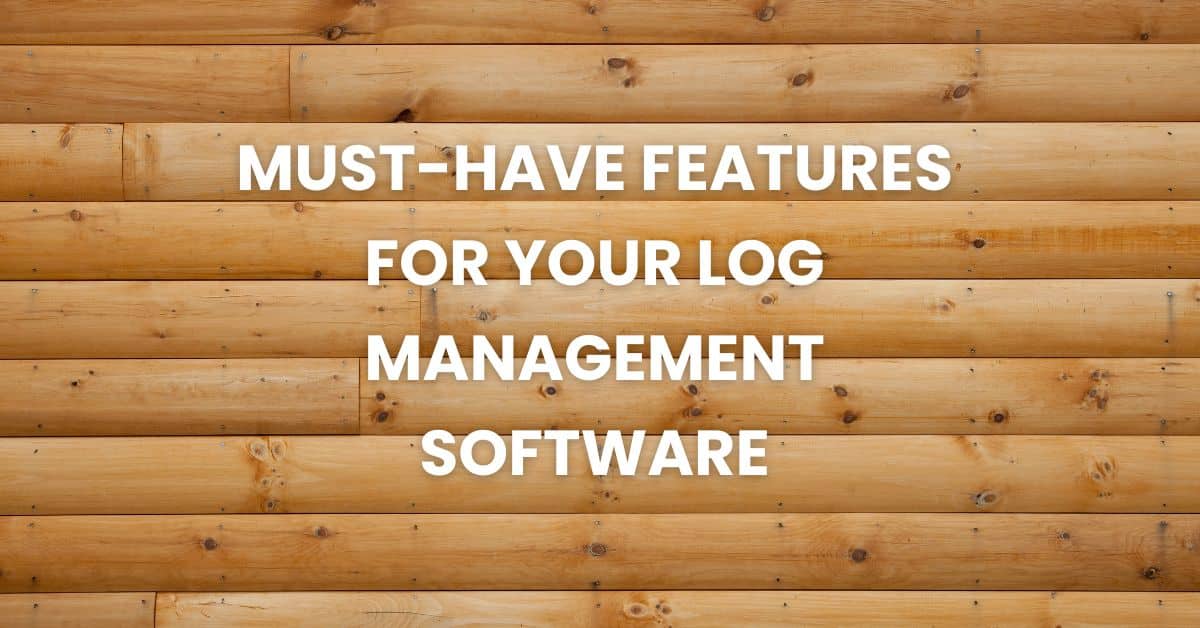With so many choices available to us today, choosing log management software that’s just right for us has never been simpler. That is, if you know exactly what it is you are looking for. But for many users, the sheer amount of computer programs that perform the same tasks, and seem so similar(sometimes almost identical) to each other, can quickly become off-putting and confusing. In psychology, this is known as Hick’s law – the more possible choices we have, the longer we take to come to a satisfying decision, since we have to carefully weigh the pros and cons of each choice and outcome. That is why being aware of which functionalities are the most integral to log management solutions is crucial when considering which one you will use.
Luckily, we have some useful tips to help you identify what features you need to have in your tool.
A COMPREHENSIVE LOG MANAGEMENT AND COLLECTION FUNCTION
A good log management tool absolutely has to have efficient and comprehensive event log collection and storage. These, of course, must also be up to the most widely used compliance laws and standards. There are many advantages to this:
- Streamlined auditing procedures, compliant with industry regulations such as the Gramm-Leach-Bliley Act, the Sarbanes-Oxley Act, and HIPAA
- The ability to create different kinds of reports, depending on the situation and your needs
- Graphical representations in the form of graphs and charts. Handy for getting a clear visual cue of your issues, as well as presenting your findings for evaluation to upper management in a format that is more convenient for them
- One app for keeping track of all the different system and event logs
- Archival of your logs for extended or predetermined periods of time (weeks/months/years)
- Ability to designate when those log files will be deleted from your system or server in order to conserve storage space
- A secure, cloud-based backup of all your important log data, ensuring that no information will be irrevocably lost–even when you delete it from your system and servers
CENTRALIZED LOG MONITORING AND ANALYSIS
Log management tools enable us to smoothly monitor and efficiently analyze our event logs. Instead of manually sifting and pouring over mountains of unrefined data, we can set up our log management solutions to do this for us, and completely automate this cumbersome process. Here are some other benefits of log monitoring and log analysis:
- Real-time monitoring gives us the means to act with speed as soon as possible when threats, errors, or oversights are detected. This feature is an essential cornerstone of IT security.
- System administrators use this trend analysis for event correlation, and they can generate their own custom templates and filters that specify if any suspicious activity has been encountered or if other issues have been identified by the system and have to be corrected.
- Advanced search options for quick locating and sorting of pertinent data
- The collection of logs from multiple sources, which can be unified into a single universal log resource
- Easier creation of more comprehensive troubleshooting methods
- Helping to differentiate between common false positives and actual bugs and similar problems
DATA PIPELINE MANAGEMENT
Managing the volume and storage costs can be a very tricky task. Log management tools have many additional features to help reduce costs in storage by performing many things while analyzing logs. Retention of logs and storage are always top of mind. Here are some additional things to consider:
- Eliminate irrelevant logs early in the pipeline to reduce the volume of stored data, lowering storage costs.
- Compress log data before storage to significantly decrease the required space without losing essential information.
- Consolidate repetitive or duplicate log entries to streamline storage while preserving critical insights.
- Route logs to appropriate storage tiers (e.g., hot, warm, cold or a Data Lake) based on access needs, balancing performance and cost.
- Extract insights from logs in real-time and store only relevant summaries or analytics, reducing the need for raw log storage.
ALERTS AND NOTIFICATIONS
Various logs are constantly being generated by our computers, cell phones, and even household objects that are now increasingly being connected to the internet (for example – smart fridges that can autonomously order groceries that you are running out of). Many of these logs go unnoticed by us – they are automatically produced by and stored in our systems. Centralized log management software addresses this by providing a framework that alerts us to the creation of these log files, and notifies us of the most important ones. A few other important elements to note here:
- A successful log management app has to be designed with user perspective in mind. Good user experience design goes beyond simple positioning of icons – it guides the user through the software in the best possible way, without being hard to figure out or filled with superfluous actions. It is clear, concise, and above all – friendly and inviting.
- Notifications can be adjusted in such a way to activate only when certain criteria (usually important issues) are met, reducing the time spent on browsing through irrelevant matters.
- To make sure that the alert will be seen by all parties involved, log management software can be set up to send out notifications and summaries via email.
CONCLUSION
Proper log management is all about managing your log reports – their generation, accumulation, archiving, and analysis – in the most efficient manner possible. To do this right, ensure the tools you are evaluating have the features described here. Graylog Enterprise provides many features and options to enhance your log data and manage log size and retention costs. To log or not to log, that was the question.


